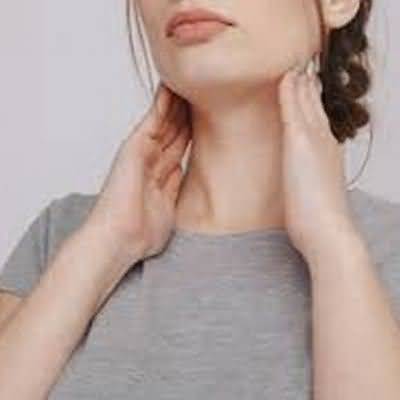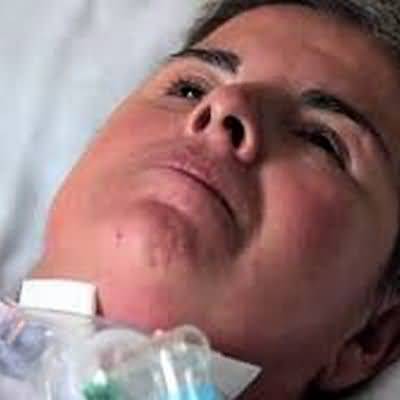disorders of the lids lacrimal apparatus
disorders of the lids lacrimal apparatus
Hordeolum
Hordeolum is a common staphylococcal abscess that is characterized by a localized red, swollen, acutely tender area on the upper or lower lid.Internal hordeolum is a meibomian gland abscess that usually points onto the conjunctival surface of the lid; external hordeolum or sty usually is smaller and on the margin.
Warm compresses are helpful.
Incision may be indicated if resolution does not begin within 48 hours. An antibiotic ointment (bacitracin or erythromycin) applied to the lid every 3 hours may be beneficial during the acute stage.
Internal hordeolum may lead to generalized cellulitis of the lid.
Chalazion
Chalazion is a common granulomatous inflammation of a meibomian gland that may follow an internal hordeolum. It is characterized by a hard, nontender swelling on the upper or lower lid with redness and swelling of the adjacent conjunctiva.Treatment
is usually by incision and curettage but corticosteroid injection may also be effective.Blepharitis
Blepharitis is a common chronic bilateral inflammatory condition of the lid margins.Anterior blepharitis involves the lid skin, eyelashes, and associated glands. It may be ulcerative, because of infection by staphylococci, or seborrheic in association with seborrhea of the scalp, brows, and ears.
Posterior blepharitis results from inflammation of the meibomian glands. There may be bacterial infection, particularly with staphylococci, or primary glandular dysfunction, in which there is a strong association with acne rosacea.
Clinical Findings
Symptoms are irritation, burning, and itching.In anterior blepharitis, the eyes are “red-rimmed” and scales or gran- ulations can be seen clinging to the lashes. In posterior blepharitis, the lid margins are hyperemic with telangiec- tasias, and the meibomian glands and their orifices are inflamed. The lid margin is frequently rolled inward to produce a mild entropion, and the tears may be frothy or abnormally greasy.
Blepharitis is a common cause of recurrent conjunctivi- tis.
Both anterior and, more particularly, posterior blepha- ritis may be complicated by hordeola or chalazia; abnormal lid or lash positions, producing trichiasis; epithelial kerati- tis of the lower third of the cornea; marginal corneal infil- trates; and inferior corneal vascularization and thinning.
Treatment
Anterior blepharitis is usually controlled by cleanliness of the lid margins, eyebrows, and scalp. Scales should be removed from the lids daily with a hot wash cloth or a damp cotton applicator and baby shampoo. In acute exac- erbations, an antistaphylococcal antibiotic eye ointment, such as bacitracin or erythromycin, is applied daily to the lid margins. Antibiotic sensitivity studies may be helpful in severe cases.In mild posterior blepharitis, regular meibomian gland expression may be sufficient to control symptoms.
Inflammation of the conjunctiva and cornea indicates a need for more active treatment, including long-term low- dose oral antibiotic therapy, usually with tetracycline (250 mg twice daily), doxycycline (100 mg daily), minocycline (50–100 mg daily), or erythromycin (250 mg three times daily), and possibly short-term topical corticoste- roids, eg, prednisolone, 0.125% twice daily. Topical therapy with antibiotics, such as ciprofloxacin 0.3% ophthalmic solution twice daily, may be helpful but should be restricted to short courses.
Entropion & Ectropion
Entropion (inward turning of usually the lower lid) occurs occasionally in older people as a result of degeneration of the lid fascia, or may follow extensive scarring of the conjunctiva and tarsus. Surgery is indicated if the lashes rub on the cornea.Botulinum toxin injections may also be used for temporary correction of the involutional lower lid entropion of older people. Ectropion (outward turning of the lower lid) is common with advanced age.
Surgery is indicated if there is excessive tearing, exposure keratitis, or a cosmetic problem.
Tumors
Lid tumors are usually benign. Basal cell carcinoma is the most common malignant tumor.Squamous cell carcinoma, meibomian gland carcinoma, and malignant melanoma also occur. Surgery for any lesion involving the lid margin should be performed by an ophthalmologist or suitably trained plastic surgeon to avoid deformity of the lid. Histopathologic examination of eyelid tumors should be routine, since 2% of lesions thought to be benign clinically are found to be malignant.
The Mohs technique of intraoperative examination of excised tissue is particularly valuable in ensuring complete excision so that the risk of recurrence is reduced. Medications such as vismodegib (an oral inhibitor of the hedgehog pathway), imiquimod (an immunomodulator), and 5-fluorouracil occasionally are used instead of or as an adjunct to surgery.
Dacryocystitis
Dacryocystitis is infection of the lacrimal sac usually due to congenital or acquired obstruction of the nasolacrimal system. It may be acute or chronic and occurs most often in infants and in persons over 40 years. It is usually unilateral.The usual infectious organisms are Staphylococcus aureus and streptococci in acute dacryocystitis and Staphylococcus epidermidis, streptococci, or gram-negative bacilli in chronic dacryocystitis. Acute dacryocystitis is characterized by pain, swelling, tenderness, and redness in the tear sac area; purulent material may be expressed.
In chronic dacryocystitis, tearing and discharge are the principal signs, and mucus or pus may also be expressed.
Acute dacryocystitis responds well to systemic antibiotic therapy.
To relieve the underlying obstruction, surgery is usually done electively but may be performed urgently in acute cases.
The chronic form may be kept latent with antibiotics, but relief of the obstruction is the only cure. In adults, the standard procedure is dacryocystorhinostomy, which involves surgical exploration of the lacrimal sac and formation of a fistula into the nasal cavity and, if necessary, supplemented by nasolacrimal intubation.
Congenital nasolacrimal duct obstruction is common and often resolves spontaneously. It can be treated by probing the nasolacrimal system, supplemented by nasolacrimal intubation or balloon catheter dilation, if necessary. Dacryocystorhinostomy is rarely required.


















